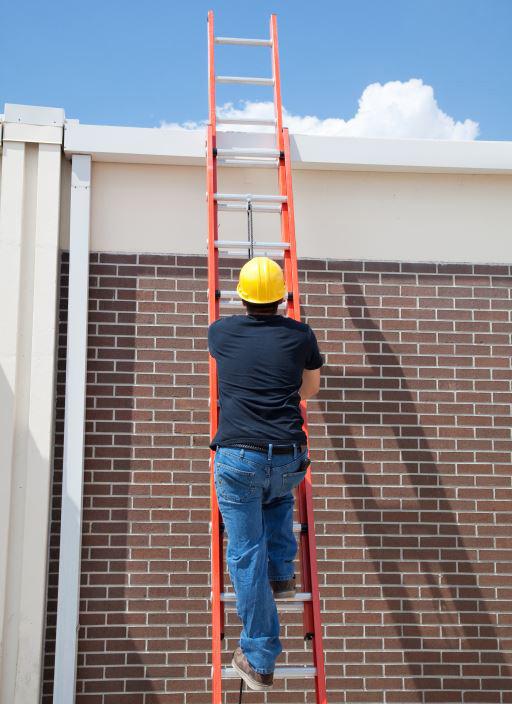
2 minute read
Ladder SafetyWorkers Compensation Fund
Workers Compensation Fund
Most of us use ladders on occasion, but few of us take the time to review ladder safety basics before using one. The following guidelines can help those who use ladders do so properly and prevent injuries.
General Guidelines
• Avoid climbing unless necessary. • Select the proper ladder (aluminum, wood, fiber glass, step, extension, straight, etc.) for the job. For instance, never use an aluminum ladder around electricity. • Choose a ladder that fits the job. If ladders are too short, people will climb too high, which will leave them without proper handholds. Ladders that are too long are difficult to handle and tend to be erected askew, which makes them highly unstable. • Never use a ladder for a purpose it’s not designed for.
• Inspect the ladder’s condition before use. Discard any damaged ladders. • Wear slip-resistant footwear.
Inspection
Periodically inspect ladders and document the inspections. Remember to look for and document the following: • Any structural damage (cracks, bends, kinks, or distortions). • Ensure all rungs are in place, secure, and free of grease or oil. • Safety feet are functional and in good condition. • Any missing parts. • Working spreaders.
Placement
• A ladder should not be placed in doorways, pas sageways, or other locations where it can be disturbed.
• Make sure the ladder is set on a stable, level surface. • A non-self-supporting ladder should be placed at an angle of approximately 75 degrees. The distance from the wall to the foot of ladder should be about one-fourth the ladder’s total length.
CONNECTINGAND STRENGTHENING UTAH'SMAKERS
Remember that the ladder is a tool to assist in getting a job done, just like a wrench or screwdriver. Focusing on the task that necessitates using a ladder while ignoring the tool, is a primary cause of ladder injuries. Climbing and descending a ladder must be a zero-mistake activity. You can’t afford an error in judgment.
For more safety topics and information, visit wcf. com. If you’re interested in getting a 5% discount on your workers’ compensation insurance as a member of the Utah Manufacturers Association, talk to your agent about the benefits of WCF Insurance.
428EWINCHESTERSTREET,#135 MURRAY,UT84107

PHONE801-363-3885 UMA@UMAWEB.ORG WWW.UMAWEB.ORG
• When using a non-self-supporting ladder to access a point where you will dismount, the ladder should extend at least three feet beyond the support point. The ladder should also be lashed as close to the support point as possible.
Climbing and Descending
• Face the ladder while climbing or descending and hold on with both hands.
• Always maintain at least a three-point contact with either two hands and one foot or two feet and one hand.
• Keep centered on the ladder. • Never lean beyond the side rails or move, shift, or extend the ladder while on it.
• On a stepladder, never climb past the second step from the top. • Take one step at a time. • If you need tools, use a tool belt or a bucket attached to a hand line.






